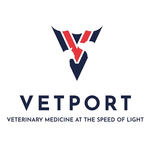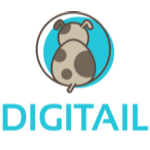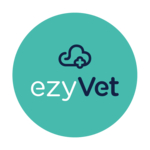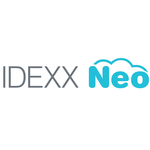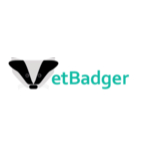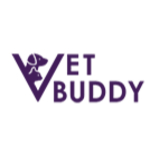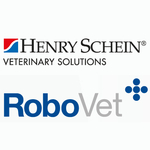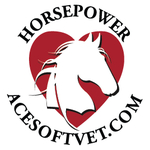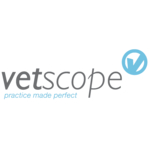List of Best Veterinary Software
Showing 10 of 41 productsVetport is a software that has been designed specifically for veterinary practices. It streamlines and simplifies various tasks to help veterinarians provide exceptional care to their furry patients. With its user-friendly features technology, Vetpor...Read Vetport Reviews
Digitail is a software, designed to streamline and simplify the operations of veterinary clinics. With its user-friendly interface features, Digitail revolutionizes the way veterinarians manage their practices, making it easier and more efficient for...Read Digitail Reviews
ezyVet is a solution for veterinary practices looking to streamline their operations and enhance patient care. With its user-friendly interface and customizable features, ezyVet simplifies day-to-day tasks, improves communication, and increases effic...Read ezyVet Reviews
IDEXX Neo, a powerful and innovative software designed to streamline and improve the efficiency of veterinary clinics. With its user-friendly interface features, IDEXX Neo simplifies daily tasks and enhances patient care. Say goodbye to outdated syst...Read IDEXX Neo Reviews
VetBadger is your ultimate solution for managing your veterinary practice with ease and efficiency. Designed to streamline your daily tasks, VetBadger offers innovative features tools to help streamline your workflow. From scheduling appointments to...Read VetBadger Reviews
VETbuddy is a software solution designed specifically for veterinary professionals. With an array of user-friendly features and a seamless interface, VETbuddy streamlines your daily tasks and enhances your productivity. Say goodbye to traditional pen...Read VETbuddy Reviews
AVImark is a highly efficient and user-friendly veterinary software that offers a wide range of features and tools to streamline administrative tasks and improve patient care. With its intuitive design and powerful capabilities, AVImark has become a...Read AVImark Reviews
RoboVet is an innovative software designed for the veterinary industry. Powered by advanced technology, RoboVet streamlines workflows, simplifies processes, and enhances overall efficiency for veterinary practices. With user-friendly features and cus...Read RoboVet Reviews
ACESoft Business Manager is a all-in-one solution for managing your business operations with ease and efficiency. Streamline your tasks, analyze your data, and make informed decisions with this powerful software. Simplify your workload and elevate yo...Read ACESoft Business Manger Reviews
VetSCOPE is an innovative software designed specifically for veterinary practices. It streamlines administrative tasks and allows for efficient management of patient records, appointments, and billing. With its user-friendly interface and customizabl...Read VetSCOPE Reviews
- What Is Veterinary Software?
- Top Reasons Why Businesses Need Veterinary Software?
- What Are the Top Key Features of Veterinary Software?
- What Are the Top Benefits of Veterinary Software?
- What Are the Steps to Choose the Right Veterinary Software?
- What Are the Types of Veterinary Software for Different Industries?
- What Are the Technology Trends for Best Veterinary Software?
- What Are the Deployment Options for Veterinary Software?
What Is Veterinary Software?
Veterinary software refers to a computer application specifically developed to assist veterinary medical professionals in effectively managing their practices and delivering high-quality care to their animal patients.
The best vet software commonly encompasses functionalities such as the organization of appointments, management of patient records, maintenance of records, handling of billing and accounts receivable, and control of inventory.
In addition to its primary functions, vet management software also facilitates the provision of convenient online access to clients' pet medical history and records within clinics. In this manner, customers are able to view their pet's medical records, medicines, and other pertinent data from any computer that has Internet connectivity.
Moreover, veterinary management software applications incorporate functionalities that enable veterinarians to exchange patient data with other veterinary practitioners, facilitating activities such as referrals or monitoring a patient's well-being.
The utilization of the best veterinary software facilitates the task of veterinarians in maintaining comprehensive records, expediting the dissemination of client information, and enabling informed decision-making through the utilization of precise patient data.
Top Reasons Why Businesses Need Veterinary Software?
1. Improved efficiency – The utilization of veterinary software has the potential to enhance operational efficiency inside enterprises by facilitating streamlined record keeping, effective communication with clients, and efficient scheduling processes.
2. Easier invoicing – The implementation of the best vet software streamlines administrative tasks by automating the issuance of invoices and facilitating payment processing, hence reducing the reliance on manual paperwork.
3. Improved client communication – The utilization of the best veterinary software facilitates the automated transmission of reminders pertaining to visits and medications, so guaranteeing that clients maintain a systematic approach and remain engaged to the healthcare of their animals.
4. Accurate patient records – The implementation of vet management software facilitates the maintenance of precise records and comprehensive patient histories, encompassing essential information such as visitation dates, administered treatments, immunizations, medical imagery, and more pertinent data.
5. Automated billing – The utilization of veterinary management system enables the automated processing of payments, so guaranteeing the prompt generation of invoices and the efficient collection of fees.
6. Streamlined inventory management – The implementation of veterinary software enables businesses to effectively monitor and manage their inventories and supply, hence ensuring enough availability of necessary resources.
7. Data security – The utilization of the top veterinary software ensures the safeguarding of client information through secure record storage, hence mitigating the risk of potential data breaches.
8. Improved profit margins – The utilization of veterinary management system enables enterprises to enhance their profitability by facilitating more precise expense tracking and price setting.
9. Online bookings – The integration of the best vet software with internet booking applications enables clients to conveniently schedule appointments and access services remotely.
10. Easier staff scheduling – The utilization of veterinary software facilitates the effective management of personnel schedules, hence optimizing operational efficiency.
11. Customizable reports – The utilization of the top veterinary software enables organizations to generate a diverse range of reports, facilitating the tracking and analysis of data for the purpose of enhancing decision-making processes.
12. Real-time updates – The utilization of veterinary management system enables organizations to enhance their level of knowledge by providing real-time updates on patients and services.
13. Cloud storage – The utilization of vet management software enables the storage and retrieval of data from cloud-based platforms, hence facilitating expedited and convenient accessibility.
14. Improved analytics – The employment of the best veterinary software has the potential to generate valuable insights on the utilization of services, hence enabling businesses to effectively leverage data for the purpose of making informed and improved decisions.
15. Increased client satisfaction – The utilization of the best vet software has the potential to enhance the precision and effectiveness of the patient encounter, hence leading to heightened levels of client contentment.
What Are the Top Key Features of Veterinary Software?
1. Patient Management: Veterinary software facilitates the efficient management of patient information within veterinary clinics, hence enabling the provision of optimal care. The aforementioned components encompass patient registration, scheduling of appointments, documentation of medical history, provision of contact information, and maintenance of medical data.
2. Veterinary Practice Management: The utilization of the best vet software facilitates the optimization of the practice workflow by integrating several functions like as billing, financial management, inventory control, and practice reporting.
3. Reports and Analytics: The utilization of the best veterinary software offers robust reporting and analytics functionalities, hence empowering veterinary clinics to make informed decisions based on data. This encompasses data pertaining to patients, finances, and key performance indicators (KPIs).
4. Paperless Office: The implementation of vet management software can effectively reduce the accumulation of paper-based materials through the utilization of electronic forms, charts, and medical notes for the purpose of enhancing patient care.
5. Scheduling and Appointment: The utilization of a veterinary management system facilitates the optimization of the appointment booking procedure, enabling users to transmit automated reminders for appointments and securely handle online payments.
6. Online Payments: Veterinary software facilitates the secure and convenient acceptance of digital payments, including credit cards, debit cards, and PayPal, within veterinary clinics.
7. Inventory Control: The utilization of top veterinary software facilitates the efficient monitoring and replenishment of inventory, so ensuring that clinics possess the necessary resources readily available to deliver high-quality healthcare services.
8. Custom Workflows: The utilization of a veterinary management system enables users to tailor workflows according to their own requirements, encompassing the establishment of automated prompts for treatments and immunizations, as well as the arrangement of automated patient follow-up visits.
9. Digital Forms: The utilization of vet management system enables veterinary teams to efficiently gather electronic forms from patients, thereby minimizing the time dedicated to administrative tasks and mitigating concerns related to the clarity of handwritten documentation.
10. Easy Integration: The integration of the best vet software with various additional software and systems, such as hospital management systems, electronic health records (EHRs), and practice management software, is feasible.
What Are the Top Benefits of Veterinary Software?
The top benefits of veterinary software are:
1. Increased Efficiency: The utilization of the best veterinary software facilitates veterinarians in digitally accessing medical records, forms, and reports, hence streamlining processes related to patient record management and insurance claim processing, resulting in enhanced efficiency and expediency.
2. Improved Diagnosis: The utilization of vet management system facilitates expedient and precise diagnosis and treatment of animals by enabling veterinarians to conveniently access patient records, generate comprehensive medical reports, and maintain meticulous medical histories.
3. Improved Security: Through the utilization of software, veterinarians are able to ensure the protection of patient records and personal data, effectively guarding against unauthorized access and mitigating the risk of potential data breaches.
4. Streamlined Scheduling: The utilization of cloud based veterinary software streamlines the procedure of arranging consultations and effectively managing client data. The system offers a convenient means of accessing, observing, and managing patient data, reducing the occurrence of incomplete records, and facilitating the transmission of reminders to both clients and staff members.
5. Cost Savings: The implementation of the best vet software results in a reduction of overhead expenses through the elimination of paper documents, file cabinets, and the allocation of staff time. Additionally, it mitigates the expenses related to billing and the monitoring of payments.
What Are the Steps to Choose the Right Veterinary Software?
1. Decide which features you need: Initially, vet management system is important to ascertain the essential characteristics as well as the discretionary ones. It is imperative to ascertain an optimal equilibrium between the various qualities and associated costs.
2.Research and compare different brands: It is advisable to conduct comprehensive research in order to compare the characteristics of cloud based veterinary software packages offered by various brands. Examine user reviews and customer testimonials to gain insights into the perceived quality and pricing of each product or service.
3. Choose a scalable software: Scalability is a crucial requirement for top veterinary software, as it enables seamless upgrades to accommodate the expanding needs of operations. Additionally, it is imperative for the system to possess adjustability in order to cater to the specific requirements of each practice on an individual basis.
4. Look for cloud-based software: Cloud-based solutions offer a range of advantages, including enhanced security measures, improved accessibility, and streamlined communication and collaboration processes.
5. Consider user support: It is advisable to choose a vendor that offers dependable customer care and technical assistance. The provision of clear and comprehensible instructions and troubleshooting guidance by the software provider is of utmost significance.
6. Ensure the software meets: It is imperative to ensure that the software complies with ethical and regulatory norms pertaining to electronic health records (EHR).
7. Test the software: Prior to making a commitment to any top veterinary software, it is imperative to conduct thorough testing of the software to ensure its appropriate functionality. It is advisable to establish a trial period and execute all requisite operations prior to formalizing the signing of the ultimate purchase order.
What Are the Types of Veterinary Software for Different Industries?
There are numerous types of veterinary software available to suit the specific needs of various industries. These include:
1. Hospital Management Software: The system is employed for the purpose of overseeing patient records, medical records, financial transactions, and facilitating communication among staff members and clients.
2. Practice Management Software: The aforementioned software facilitates the efficient management of various operational aspects inside a veterinary clinic, encompassing tasks such as scheduling and issuing reminders, generating comprehensive patient records, and overseeing billing and coding procedures.
3. Mobile Apps: The utilization of mobile applications is experiencing a surge in popularity within veterinary practices due to their ability to provide convenient access to information at any time and location.
Mobile applications have the potential to enhance laboratory operations by providing convenient access to laboratory results, facilitating adjustments to schedules, sending appointment reminders, and enabling effective communication with clients.
4. Herd Management Software: This particular veterinarian software has been specifically developed to effectively monitor and manage extensive animal populations, meticulously document their health conditions, and proactively anticipate any health concerns. This technology has the potential to assist in the monitoring of cattle health and facilitate the achievement of optimal outcomes.
5. Laboratory Software: This particular program is utilized to enhance the operational efficiency of laboratories, facilitate data management, and enable result tracking. The utilization of this tool has the potential to mitigate errors, monitor outcomes over a period of time, and guarantee consistency throughout the entirety of the process.
6. Breeding Software: The utilization of breeding software facilitates the monitoring of genetic information pertaining to diverse animal species, hence enabling the selection of suitable mates that possess desirable health traits.
Additionally, the vet management system facilitates the expeditious selection of breeding mates and offers insights into identifying the most suitable match for a given animal.
What Are the Technology Trends for Best Veterinary Software?
The technology trends pertaining to optimal veterinary software can be categorized into two distinct domains: hardware and software. In terms of hardware requirements, veterinary management software necessitates efficient data processing capabilities to manage substantial volumes of information expeditiously.
Moreover, it should possess compatibility with diverse computing platforms, encompassing mobile phones and tablets. The system should possess compatibility with both antiquated and contemporary operating systems, hence ensuring seamless integration with older software.
From a software perspective, it is imperative that the software is equipped with the most up-to-date technologies, such as cloud computing, in order to guarantee scalability and optimize uptime.
Additionally, veterinary management software is imperative for the system to possess the capability to seamlessly integrate with external applications, including but not limited to invoicing and scheduling systems. The program should possess the capability to deliver real-time analyses and data, hence facilitating enhanced collaboration among veterinarians.
Furthermore, the cloud based veterinary software should include the capability to facilitate personalized modifications, such as the creation of automated workflows and notifications. Moreover, it is imperative that the system is equipped with sophisticated security measures in order to safeguard veterinarian data.
What Are the Deployment Options for Veterinary Software?
The potential methods of implementing veterinary software can differ based on the particular system and its unique demands. In many cases, the prevalent approach for deploying software is on-premise or local implementation. This entails users acquiring a software license and subsequently installing and maintaining the application on their own PCs or local servers.
This alternative provides enhanced management capabilities for the application, enabling users to conveniently personalize the software. The adoption of cloud-based deployment for veterinary software is experiencing a growing trend due to the rising migration of services to cloud platforms.
Typically, this alternative is offered as a subscription-based service, provided and managed by the software business or service provider. It enables customers to conveniently access the application from any computer or device that has internet connectivity.
Furthermore, veterinary management software may provide a Hybrid deployment option that integrates the on-premise model with cloud infrastructure. This allows customers to utilize specific cloud-based features while retaining local access to the software.
